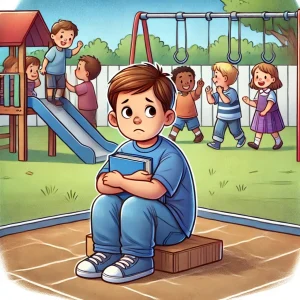Speech Therapy at Home for Kids with Speech Delays
By Wellness Hub
Last Updated: October 19, 2024
Wondering how you can support your child’s speech development at home? It’s easier than you think!
Early intervention is key when it comes to helping kids with speech delays, and speech therapy at home can play a significant role in supporting your child’s progress. By practicing targeted speech therapy exercises, you can supplement professional sessions and reinforce learning in a comfortable, familiar environment. At-home therapy empowers parents and caregivers to become active participants in their child’s speech development, providing ongoing support and encouragement. This guide will show you simple, effective techniques to help your child overcome speech delays and build confidence in communication. Together, let’s make speech therapy at home a success!
Understanding Speech Delays in Children: Key Causes and Solutions
What is a speech delay?
A speech delay occurs when a child doesn’t meet typical speech and language development milestones within the expected time frame. While every child develops at their own pace, consistent delays in communication can be concerning for parents. Recognizing and addressing speech delays early is key to helping children overcome these challenges.
Read More: Understanding Speech Delay: Causes, Milestones, and Therapy
Common Causes and Warning Signs of Speech Delays in Toddlers and Preschoolers
Speech delays can result from various factors. Some children may experience delays due to hearing issues, while others could be affected by developmental conditions such as autism spectrum disorder or intellectual disabilities. It’s important to monitor for key speech delay signs like limited vocabulary, difficulty forming sentences, or challenges in following instructions. By understanding these speech development milestones, parents can better gauge whether their child is on track or needs extra support.
When to Seek Professional Help or Start Speech Therapy at Home
Parents often wonder when it’s time to reach out to a professional for a toddler speech delay. Generally, if a child isn’t meeting milestones such as speaking simple words by 18 months or forming basic sentences by age 3, consulting a speech therapist may be beneficial. In some cases, trying speech therapy at home can be effective, especially when supported by guidance from a professional. Early intervention is key to helping children reach their full communication potential.
How Parents Can Support Speech Therapy at Home
The Essential Role of Parents in Daily Speech Therapy Practice
Parents play a crucial role in their child’s speech development. By engaging in daily speech practice, you reinforce the skills your child learns during therapy. Consistency is key, and integrating speech therapy exercises into everyday interactions strengthens communication skills. Simple actions, like encouraging your child to name objects, describe their day, or repeat phrases, can make a significant difference in their progress. This involvement not only boosts their confidence but also helps them apply these skills in real-life situations.
Building a Consistent Speech Therapy Routine at Home: Tips for Success
Establishing a speech therapy routine at home ensures your child practices regularly, which is essential for lasting improvement. Set aside specific times each day for speech exercises, whether it’s after school, during meals, or before bedtime. A structured routine helps your child know what to expect and creates a positive learning environment. Parental involvement in speech therapy is about being patient and persistent, offering praise and encouragement as your child practices new sounds and words.
Incorporating Speech Therapy into Daily Routines: Playtime, Mealtime, and Storytime
Incorporating speech therapy at home into your child’s daily activities can make the process fun and engaging. Playtime is an excellent opportunity to introduce new words, sounds, and sentence structures. For example, you can use toys to prompt your child to describe what they are doing or where the toys are going. At mealtime, encourage your child to ask for items by name or describe their food. During story time, ask questions about the characters or the plot to promote verbal responses. These natural settings allow your child to practice speaking without it feeling like a chore, making daily speech practice more enjoyable and effective.
Top Effective Speech Therapy Techniques for At-Home Practice
1. Modeling Correct Speech
One of the most effective ways to support your child’s speech development at home is by modeling correct speech. Simply put, this means demonstrating the correct way to produce sounds and words for your child to imitate. When your child hears clear and accurate speech patterns, they are more likely to mimic these sounds, enhancing their language skills. Be patient and offer gentle corrections, ensuring that they feel encouraged rather than pressured.
2. Encouraging Speech Through Play
Children learn best through play, and incorporating language development games into your child’s routine can significantly boost their speech skills. Play-based activities like role-playing, interactive storytelling, and using toys to create dialogue encourage children to practice speaking in a relaxed environment. This method makes learning enjoyable while naturally enhancing their vocabulary and pronunciation.
3. Reading Aloud
Reading aloud is a powerful tool in speech therapy. Choose engaging and age-appropriate books to read with your child, and make storytelling a daily habit. When you read aloud, pause occasionally to let your child repeat or complete sentences. This not only improves their language comprehension but also strengthens their articulation. Make reading interactive by asking questions and encouraging your child to express their thoughts about the story.
4. Using Flashcards and Visual Aids
Flashcards and visual aids are excellent tools for helping children recognize words and improve articulation. Start with simple, everyday objects, and gradually introduce more complex words. Use visual cues to assist them in linking images with words, making it easier for them to retain and pronounce new vocabulary. Flashcards for speech therapy are especially useful for children who struggle with word recognition or specific speech sounds.
How to Create a Language-Rich Environment for Speech Therapy at Home
A language-rich environment is essential for fostering strong communication skills in children, especially when engaging in speech therapy at home. Here are simple but effective ways to create this environment:
Talking Through Daily Activities
Narrating your actions during daily routines can significantly boost your child’s vocabulary. Whether you’re cooking, folding laundry, or running errands, explain what you’re doing. For example, while preparing a meal, say, “I’m chopping carrots for the salad.” This constant exposure to words helps expand your child’s understanding of language and encourages them to use new words in context.
Expanding on Your Child’s Words
One of the easiest ways to improve your child’s sentence length and clarity is to expand on what they say. If your child says, “car,” you can respond with, “Yes, that’s a red car. It’s driving fast.” This helps your child learn more about how words fit together to form more complex sentences. Over time, it encourages them to express themselves more clearly and confidently.
Reducing Screen Time and Increasing Interaction
While screen time might seem educational, real-world communication offers far greater benefits. Reducing screen time and encouraging more face-to-face interaction allows your child to practice and develop essential language skills. Play games, read books, or have conversations during meals to promote interactive speech therapy at home. Real-time communication strengthens their ability to engage and respond appropriately, which screens cannot replicate.
By focusing on these practical strategies, you can create a language-rich environment that enhances your child’s speech therapy at home and supports their overall language development.
Overcoming Common Speech Therapy Challenges at Home
Dealing with Frustration: Encouraging Persistence When Progress Seems Slow
One of the most common challenges in speech therapy is dealing with frustration when progress seems slow. Many parents and caregivers feel disheartened when their child doesn’t show immediate improvements. It’s important to remember that speech therapy is a gradual process. To overcome this, encourage persistence by celebrating small victories along the way. Praise your child for their efforts, no matter how minor the achievement may seem. This boosts motivation and builds a positive mindset towards speech therapy. Staying patient and consistent helps your child overcome speech delays effectively.
Making Speech Exercises Fun: Incorporating Rewards and Engaging Activities
Keeping a child engaged during speech therapy can be tough, but turning exercises into fun activities can make all the difference. Incorporate games, songs, or storytelling to make speech therapy enjoyable. For instance, you can use a favorite toy as a reward after completing an exercise, or create a speech-themed scavenger hunt to boost motivation. Fun speech therapy activities like these not only keep your child engaged but also encourage them to look forward to their next session. Overcoming speech therapy challenges becomes easier when exercises are both educational and enjoyable.
Tracking Progress: How to Monitor Improvements in Your Child’s Speech Over Time
Tracking your child’s speech progress is crucial to ensuring they are moving in the right direction. Start by setting clear goals with your speech therapist. Keep a journal or a chart that records daily improvements, such as the number of words your child is able to pronounce clearly or how well they follow speech instructions. Regularly review these milestones to identify areas where they’re thriving and those that need extra attention. Effective speech progress tracking allows you to adjust exercises to meet your child’s evolving needs, ensuring steady growth in their speech development.
When to Reach Out to a Speech Therapist
It’s essential for parents and caregivers to understand when at-home speech therapy may not be enough for their child’s speech development. Recognizing the signs early can ensure that your child receives the necessary support from a professional speech therapist.
Recognizing When At-Home Therapy Isn’t Enough
While speech therapy at home can be a valuable tool in supporting your child’s progress, there are clear indicators when it’s time to consider professional intervention. Some signs of speech delay that might require professional help include:
- Your child isn’t using any words by 18 months.
- There is a lack of understanding of basic instructions by age 2.
- Your child struggles with forming simple sentences by age 3.
- Your child’s speech is difficult for others to understand by age 4.
These milestones are crucial indicators. If your child isn’t meeting them, seeking help from a professional speech therapist is vital for timely intervention. Professional speech therapists can accurately assess your child’s needs and create a tailored treatment plan that enhances their communication skills.
Combining Professional Therapy with At-Home Practice
Even after starting with a professional, continuing speech therapy at home can significantly support your child’s progress. The key is to work hand-in-hand with your therapist. Here’s how:
- Follow the therapist’s recommendations for home practice, reinforcing the techniques they use during therapy.
- Ask for specific exercises and activities you can do at home to support what your child is learning in sessions.
- Use online resources, including online speech therapy, to complement in-person visits.
By combining professional speech therapy with consistent at-home practice, you can maximize your child’s development. A blend of professional expertise and your commitment at home creates a comprehensive approach that accelerates progress.
Also read: 12 Speech Delay Myths Every Parent Should Know
Final Tips for Successful Speech Therapy at Home
1. Consistency is Key: The Importance of Patience and Persistence
Successful speech therapy at home requires consistency. Establishing a regular routine for speech practice ensures steady progress. Be patient as each child progresses at their own pace. Frequent, short sessions are more effective than infrequent, long ones. Consistent speech practice helps your child develop essential language skills over time, making it a crucial part of the journey.
2. Celebrating Small Victories: How Positive Reinforcement Can Encourage Speech Improvement
Positive reinforcement in speech therapy is a powerful tool for encouraging improvement. Celebrate every small achievement—whether it’s correctly pronouncing a new word or completing a full sentence. Offering praise, high-fives, or rewards motivates your child and boosts their confidence, making speech therapy a fun and encouraging experience. These small celebrations pave the way for bigger milestones in speech development.
3. Involving the Whole Family: Tips to Make Speech Practice a Family Activity
Speech therapy family involvement can significantly enhance your child’s progress. Make speech practice a group effort by including siblings and other family members. Fun activities like storytelling, singing, or word games can turn speech exercises into bonding moments. When the whole family is engaged, your child feels supported, which encourages more frequent and enjoyable practice sessions.
Conclusion
In conclusion, parents and caregivers play a vital role in their child’s speech development. By practicing consistent speech therapy at home, engaging with speech therapy activities, and providing positive reinforcement, you can help your child overcome speech delays. Remember, early involvement and dedicated efforts can make a significant difference in your child’s communication skills. If you’re seeking more guidance or resources, explore options like Wellness Hub for expert advice on speech therapy for kids with speech delays. Taking the first step now ensures your child is on the right path to effective speech development.
Frequently Asked Questions
1. What is speech therapy at home, and how does it work?1.
Speech therapy at home involves parents and caregivers using structured exercises and activities to support their child’s speech development. This therapy can complement professional speech therapy sessions, allowing children to practice speech exercises in a comfortable, familiar environment. Parents are guided by therapists or use resources to ensure effective speech practice.
2. Can speech therapy be done at home for kids with speech delays?
Yes, speech therapy can be done at home for kids with speech delays. With the right tools, resources, and guidance from a professional speech therapist, parents can help reinforce speech exercises and support their child’s language development in everyday situations like playtime, meals, and reading.
3. How can I help my child with speech therapy at home?
To help your child with speech therapy at home, you can engage in activities such as modeling correct speech sounds, reading aloud, playing speech-enhancing games, and using visual aids like flashcards. Consistency and creating a language-rich environment are key to making progress.
4. How do I know if my child needs speech therapy?
Children may need speech therapy if they show signs of delayed speech development, such as not reaching common speech milestones, difficulty pronouncing words, or limited vocabulary for their age. If you’re unsure, consulting a professional speech therapist can help determine if speech therapy is necessary.
5. What are the benefits of doing speech therapy at home?
Speech therapy at home allows children to practice in a familiar and relaxed environment. It helps parents actively engage in their child’s progress, reinforces what is learned in professional sessions, and creates more opportunities for consistent, daily practice. Additionally, at-home therapy can be customized to fit your child’s needs.
6. What speech therapy exercises can I try at home?
Common speech therapy exercises for at-home practice include making silly sounds to engage your child, using flashcards to teach new words, reading stories aloud, and encouraging your child to mimic words and sounds. Activities like “Complete the Thought” and offering choices in daily interactions also support language growth.
7. How long does it take for speech therapy at home to show results?
The results of speech therapy at home vary depending on the child’s specific speech delay and how consistently the exercises are practiced. While some children may show improvements within weeks, others may take several months of regular practice to achieve significant progress.
8. Can speech therapy at home replace professional therapy sessions?
Speech therapy at home should complement, not replace, professional therapy sessions. While at-home exercises are beneficial for daily reinforcement, working with a qualified speech therapist ensures your child receives personalized strategies and professional assessments for their speech delay.
9. How can I keep my child motivated to do speech therapy at home?
To keep your child motivated during at-home speech therapy, make the exercises fun by incorporating games and rewards. Use positive reinforcement to celebrate small victories and involve the whole family in the process to make it a more enjoyable and interactive experience.
10. At what age should I start speech therapy for my child?
Speech therapy can start as early as 18 months if your child shows signs of delayed speech development. However, the earlier you seek help, the better. Early intervention can significantly improve outcomes, so it’s important to address any concerns as soon as they arise.
About the Author:
Rajini Darugupally
M.Sc., Speech-Language Pathologist (9+ years of experience)
Rajini is a passionate and dedicated Speech-Language Pathologist with over 9+ years of experience, specializing in both developmental speech and language disorders in children and rehabilitation in adults. Driven by a desire to empower each individual to find their voice, Rajini brings a wealth of experience and a warm, genuine approach to therapy. Currently, at Wellness Hub, she thrives in a team environment that values innovation, compassion, and achieving results for their clients.
Book your Free Consultation Today
Parent/Caregiver Info:
Client’s Details:
* Error Message









